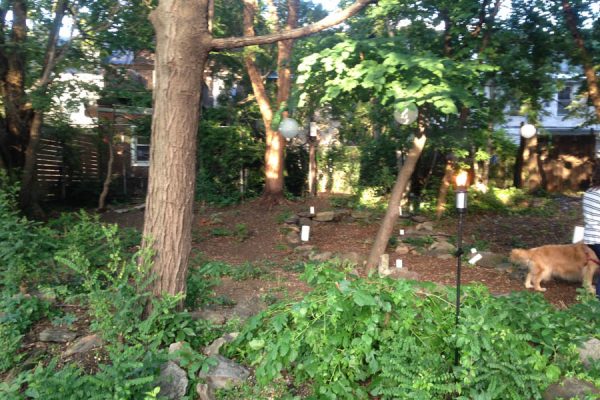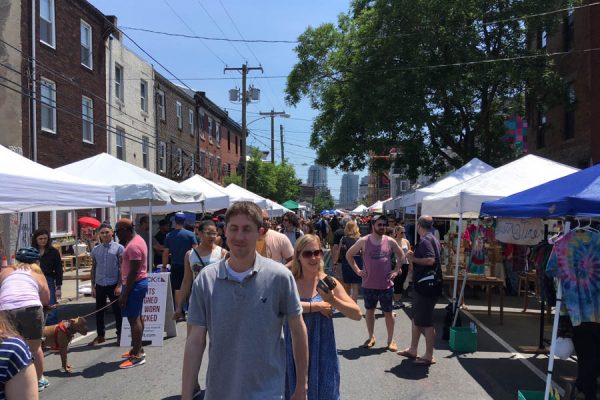Gardening Tips From Greensgrow Farm
On the first week of each month, David Prendergrast from Greensgrow Farms will be answering your urban gardening questions. This month’s reader writes:
Dear Garden Gnome,
I have a lot of shade in my backyard where I want to garden. What kinds of things can I grow in partial or full shade? I only get two hours in areas of my garden due to the building next door.”
Dear Stuck in the Shade,
First, don’t be afraid of the dark: Gardens that are created for shade are some of the most rewarding and diverse areas to spend your time; pulling from every culture around the world, Japanese Zen, English traditional, and—my favorite—American funk. Drawing ideas from other cultures can make your space one of a kind. The unique thing about living in the city is instead of planning your garden around the undergrowth of shade trees, we need to plan according to what buildings are blocking out the sun from our yards.
As the city experiences an influx of new construction around us, many gardens have gone from partial shade to total shade in the span of one winter. My second point of advice would be to do your homework: Preparing your garden to plant is similar to painting your living room, two-thirds preparation one-third painting. If you invest the time into putting the right plant in the right place, you will enjoy your garden and save money in the long run. We all want the thrill of immediate gratification, but home gardening is a labor of love. If you are one of the lucky gardeners that already knows the light infusion throughout your yard, you are halfway there. If you have just moved to your home, spend some time outside during the day to see how the sun travels through your space. If you know that new homes are going to be built in the near future, then planting edibles and annuals would be a better investment until the houses are complete.
The planning involved with growing plants in the shade is the same as growing plants in any light source. The great thing about our world is that it offers an abundance of plants that thrive in most conditions. Knowing your light levels is crucial to having a successful garden. To be honest, shade gardening presents more of a challenge to some people. They try to get the explosion of color that sun—loving plants bring throughout the growing season. Petunias, Zinnias, Echinaceas, Milkweed and most edible plants will not grow in a shady environment; they need at least six hours of sunlight to fruit and flourish and will not succeed in a shaded garden. To determine your light levels, there are five different terms that define the amount of sunlight that can filter through to the garden spoil:
FULL SUN: When sunlight hits your soil all day. Gardeners also consider the mid-day sun from 11AM until 3PM would be considered full sun. It is when the sun is directly overhead and considered the hottest time of day.
PART SUN: This is when sunlight gets through to your plant either during early morning or later in the day before noon and after 3PM.
FILTERED LIGHT: Sunlight hits part of your garden throughout the day, or light filters through larger trees and shrubs to touch the soil.
SHADE: Sunlight hits your soil only certain times during the day.
FULL SHADE: Your soil never sees the sun. If you’re growing indoors, consider a grow light.
Soil in a shade garden needs to be amended every season to keep trees, shrubs, and perennials thriving through your garden’s life. There are two ways that you can do this: Adding Humus or Compost to the soil’s surface and working it into your existing soil will help break up the dense soil that often accrues when a building or large tree looms over your garden. Earthworms will help to loosen up the soil, so get some.
When designing a garden in the shade, consider the end goal. What do you want to get from your space? Do you want to have an open space with seating to enjoy a cup of coffee or a glass of wine? Are you looking for a place to relax in a hammock after work? Utilitarian and shade gardens go hand in hand. They offer a natural cooling effect and a break from the sun. Having plants that offer texture, fragrance and color are the best stress reliever one can hope for.
Every shade garden should have these three plant types—small trees, shrubs, and perennials—for structure and satiability. Annuals and groundcovers will add color and texture to the lower zone of the space. Any garden plan should have thrillers, fillers or groundcovers as well as contrasting textures to keep your eye traveling around the garden.
Once you start looking into the different varieties of shade plants that you have, you will get a thrill from the available plants that will brighten up your shady corner. Most will prefer partial- or filtered shade, but some can do well in full shade. The 2012 USDA Plant Hardiness Zone Map is the standard by which gardeners and growers can determine which plants are most likely to thrive at a location. Make sure that you check their hardiness so you invest in plants that will thrive in our neck of the hood, which is zone 6 or 6A. If you have the space, consider adding to your plan flowering-understory trees. Small flowering trees such as Dogwoods and Redbuds will add spring interest with their stunning umbrella of color. Here are my favorite varietals for shade gardens in zone 6:
Perennials: Astilbe, Bleeding Heart, Foxglove, Hellebore (stunning in any environment), Daylily, Heuchera, Hosta, Ferns (of any type, just pick one), Creeping Phlox, Solomon’s Seal, Primrose, Lungwort, and Tiarella.
Shrubs: Japanese Holly, Mountain Laurel, Japonica Leucothoe, Nandina Domestica, Cherry-Laurel, Rhododendron, Azalea, The Queen of Shade, and Camellia. The Camellia, which bloom in early spring or late fall, are also an evergreen with a waxy leaf. Amazing! Every shade garden should have more than one.
Groundcovers: Ajuga, Wild Ginger, Heartleaf, Carex, Lily of the Valley, Alpine Strawberry, Sweet Woodruff, Epimedium, and all Fern varietals.
Annuals: Wax Begonia (who am I kidding, any Begonia), Coleus, Impatiens (in any color combination), Forget-Me-Not, Torenia and Viola.
When you’re drawing the plans for your shade garden, keep in mind the placement of the plants. Start with a few plants, about three or four types, per garden layer so as to maximize nutrient use. Pick your favorites and plant them in odd numbers to balance the texture, height and color to keep your eye traveling through your yard.
Have a question? Write to Spirit News and Garden Gnome will be happy to offer advice and suggestions to help you make your oasis come true.
Think sustainable, keep greening, and keep growing.







